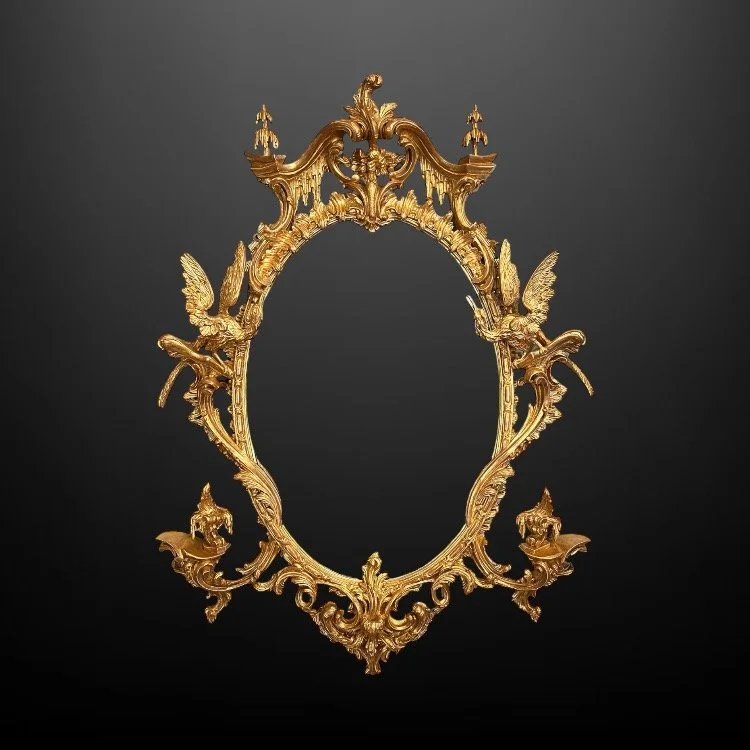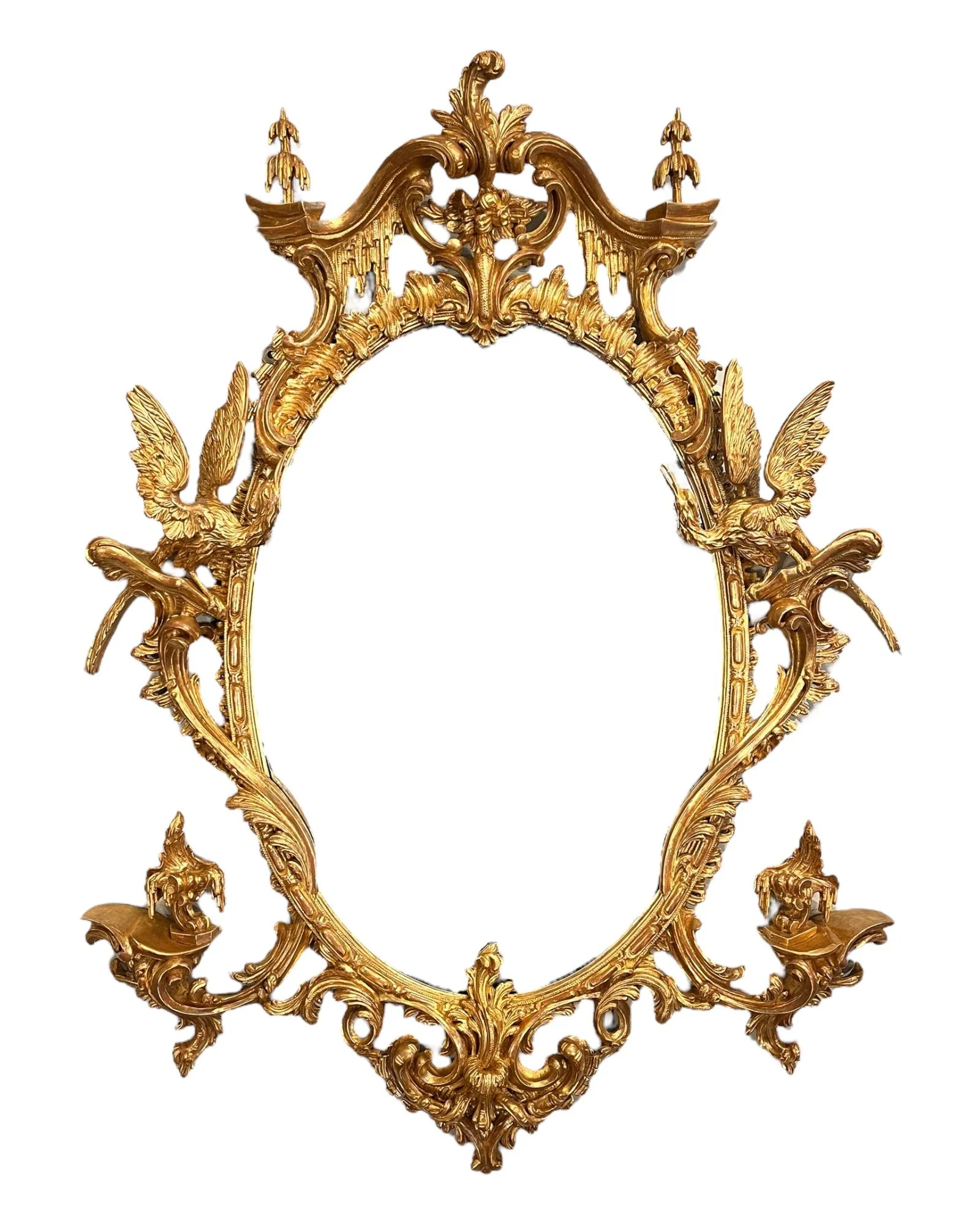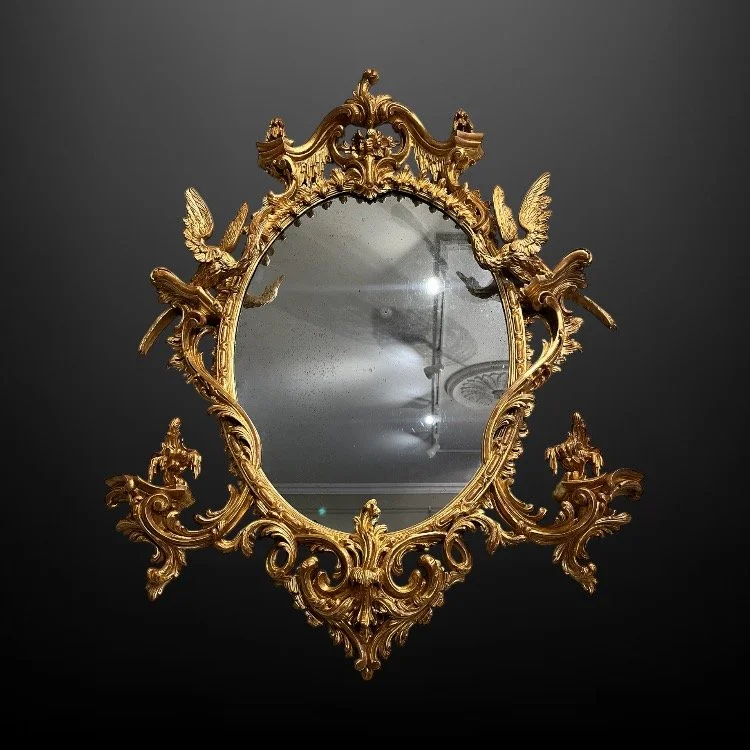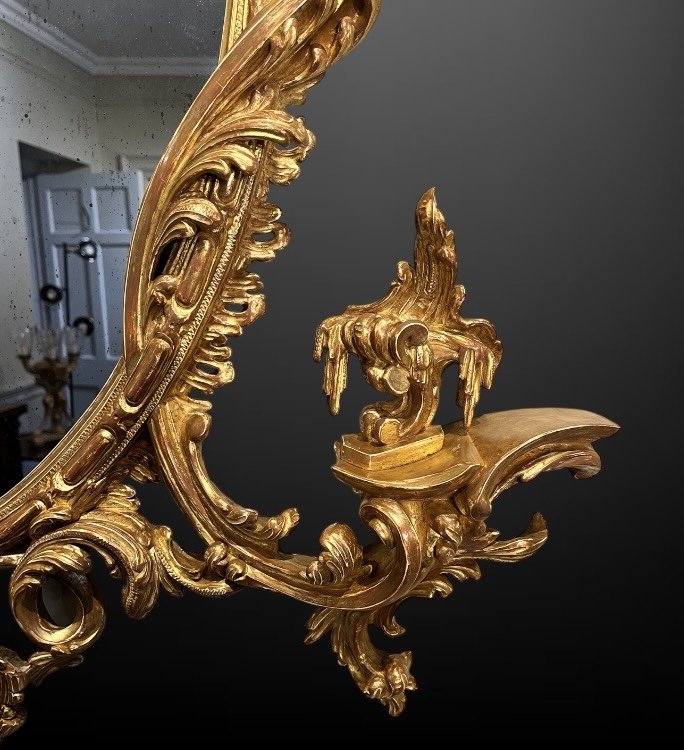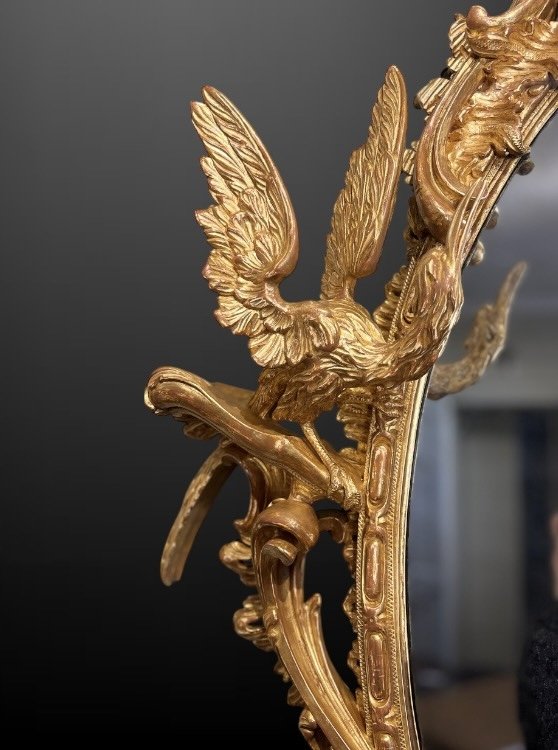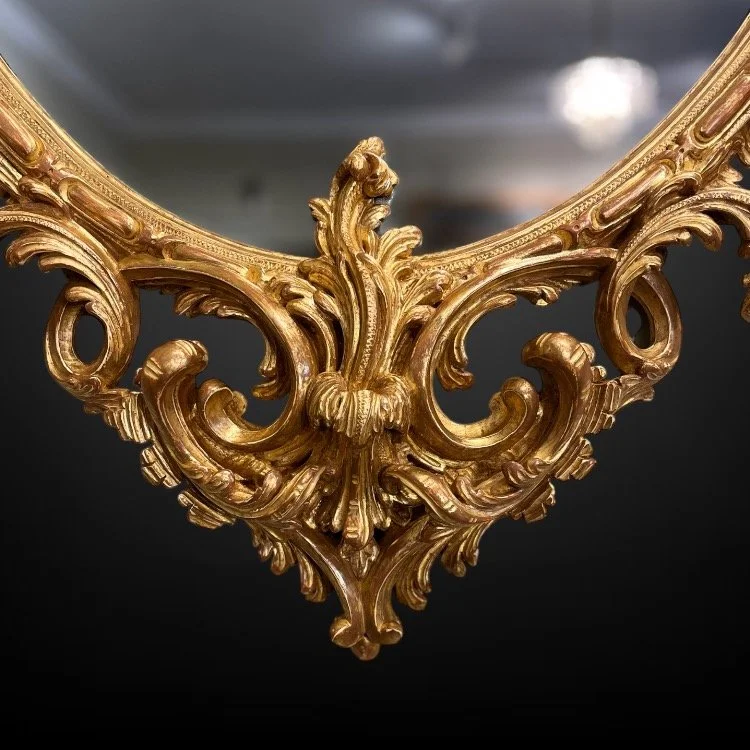A 19th Century oval wall mirror in the manner of Thomas Johnson
A 19th Century oval wall mirror in the manner of Thomas Johnson
A 19th Century oval wall mirror in the manner of Thomas Johnson, the exuberant drama of the design cleverly tempered and balanced to present a most enchanting piece.
The tied foliate crest is supported by C-scrolls framing a rose and flowerhead within, a waterfall decoration to either side bounded by outer platforms supporting double fringed palm trees. Further flanking S-shaped platforms support an opposing pair of ho-ho birds with foliate arms scrolling out to shaped platforms supporting fringed urns, above the scrolled and tied foliate apron.
Beautiful mercury mirror plate.
Size.: 49 1/4 inches (125 cm) high; 37 ½ inches (95 cm) wide; 6 inches (15 cm) deep
Rococo elements such as rocaille, C- and S- scrolls, rockwork, leaves and stalactites were much in evidence in the design repertory of the mid-18th Century and paired ho-ho birds appear in the decorative repertory around the same time. Thomas Johnson provided numerous designs for frames for pier glasses and overmantel glasses incorporating paired ho-ho birds, viz. The New Book of Ornaments (1758) & One Hundred and Fifty New Designs (1761). Johnson designs were marked by the bold use of the Rococo, chinoiserie and rustic motifs, incorporating rocaille and animals. By the early 19th Century, the Prince Regent and his extravagant Brighton Pavilion with its inherent fascination with the mythical East helped chinoiserie regain its place in popular taste. Many mid-18th Century ornamental designs were reprinted then e.g. John Weale published Chippendale’s Ornaments and Interior Decoration in the Old French Style (1834).
In Western architecture and decorative arts, rocaille is seen as an 18th Century ornamentation featuring elaborately stylized shell-like, rocklike, and scroll motifs derived from the more prominent aspects of the Rococo style of architecture and decoration that developed in France during the reign of King Louis XV (1715–74). In wall decorations of wood or plaster, rocaille features shells, pebbles, and scrolls as well as flower, fern, and coral forms, all emphasizing brief asymmetric single or double curves.
See Taking Shape: Finding Sculpture in the Decorative Arts An exhibition co-organised by the Henry Moore Institute, Leeds and the J Paul Getty Museum, Los Angeles, California. 2008

